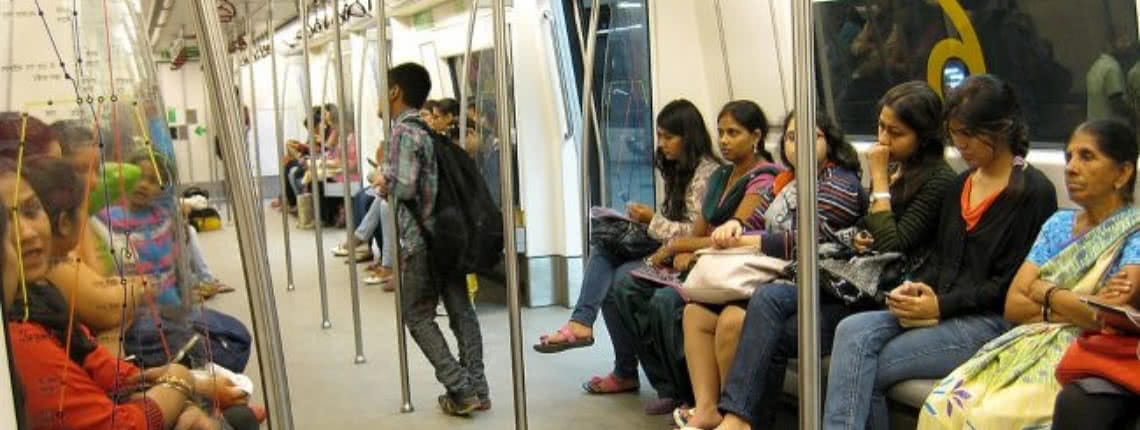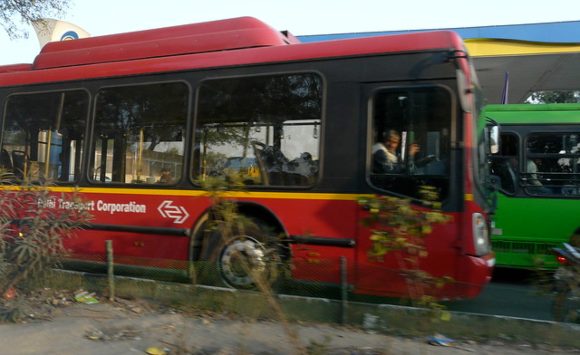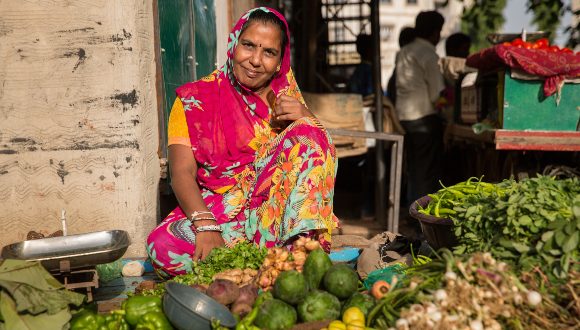
The recent proposal by the Delhi government to make public transportation free for women has been hailed as a way to improve women’s safety in the city. The idea is that group solidarity on buses and trains has the potential to reduce risks faced in individual rickshaws or by walking alone, especially at night in a city that has been seen as unsafe. However, what has not been discussed is how essential this move is to expanding women’s economic opportunities, especially for those who need it most.
Free public transportation may not just improve women’s safety, but it could prove to be an essential poverty-alleviation mechanism.
Good, reliable transportation is a game changer for getting women — and men — of all socio-economic backgrounds to get to work safely and on time. But for the poor, transportation costs eat into meagre earnings, and for women, it can dig in deep enough to take them out of the workforce entirely. The pay off simply isn’t worth it. Because of this, free public transportation may not just improve women’s safety, but it could prove to be an essential poverty-alleviation mechanism. As countries across the Global South strategize how to meet Sustainable Development Goals, breaking down barriers to women’s mobility in cities is an essential first step.

Free transport as poverty-alleviation mechanism
Delhi is a prime example. It has a shockingly low percentage of working women for being India’s capital city and urban hub. Delhi’s Female Labour Force Participation Rate for 2011-2012 was just 11.2 per cent, substantially below the national average of 25.51 per cent. And of that small female workforce, a large number were engaged in informal employment. These are the poorest and most precarious workers who, for the most part, work as domestic workers in people’s homes or who stitch clothing at home.
We found that one quarter of those who had to rely on paid transport operated at a loss.
Women may work close to home or even at home, but they still need to get around. Home-based workers, for example, may be working from their own homes but they need to move about regularly. Many travel almost daily as part of their work to pick up materials at the market, negotiate with contractors, or engage with customers. Given these needs, the availability and cost of public transport directly impacts the time and money spent in commuting and transporting goods and, thus, the productivity and earnings of the workers.
In a study we conducted, the Informal Economy Monitoring Study, of home-based workers in Ahmedabad, Bangkok and Lahore, we found that one quarter of those who had to rely on paid transport operated at a loss. These workers already carry the burden of covering the many costs of production, including those of their home workplaces such as the added electricity from working there and running machines, such as for sewing.
Transportation is a cost burden informal workers take on in trying to earn a daily wage. Bringing free public transportation could improve their earning potential, reducing the additional cost burden of getting around and, in fact, increasing their access to larger markets and more customers.
Free public transportation could get them to their destination in less time, allow them comfortable travel, and give them more time for leisure and family.
Similarly, part-time domestic workers often take up work close to home, walking back and forth, sometimes twice a day, to save on transport expenses. Free public transportation could get them to their destination in less time, allow them comfortable travel, and give them more time for leisure and family. Many women are confined to what is available within just a short range from home, limiting what they can do, especially if they live in a poorer area of the city with fewer work options. Opening up free local travel could also open up more employment options for these workers.
Lastly, cities such as Delhi continue to drive the working poor to the urban periphery through forced evictions, causing many women to lose their jobs entirely. Formerly a construction worker, Savita took up home-based work after her family was relocated from the centre to the edge of the city. The time it took to travel such a long distance left her with few options but to quit. She was forced to take on low-paying home-based work. The transport deprivation led to an unfavourable labour-market decision. She could not travel for work, so she accepted work that would travel to her.

An important step for increasing women’s earning potential
The cycle of losing opportunities that could improve women’s economic empowerment could be broken. Savita, who has four daughters, said, “I educated my own daughters, through very difficult times. But, now, I cannot always afford the 10 rupees each day that they need to take the bus to college.”
The cycle of losing opportunities that could improve women’s economic empowerment could be broken.
Transport costs are a drain on the earnings of the poor and a subsidy such as the one proposed by the Delhi government could make an important contribution towards women’s work, skill building and education, all of which are constrained by their limited mobility and access to the transport system of the city. Of course, this initiative will have to be corroborated with safe travel: street lights, last-mile connectivity, attitudinal change of drivers and conductors, and better and more work opportunities. Delhi needs to lead the way with women’s economic opportunities to pick up its woeful numbers, and this initiative could be an important starting place.
Read more about the cost of transportation and other barriers to increased income for poor working women in WIEGO’s Informal Economy Monitoring Study.
Feature photo: Paula Bronstein / Getty Images Reportage. Shanta Solanri and other informal working women often choose unfavourable labour options to save on transport costs. Delhi's proposed measure could change that.
Related Posts
-
Informal Economy Theme
-
Informal Economy Topic
-
Region
-
Language
